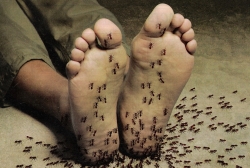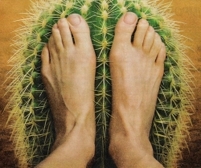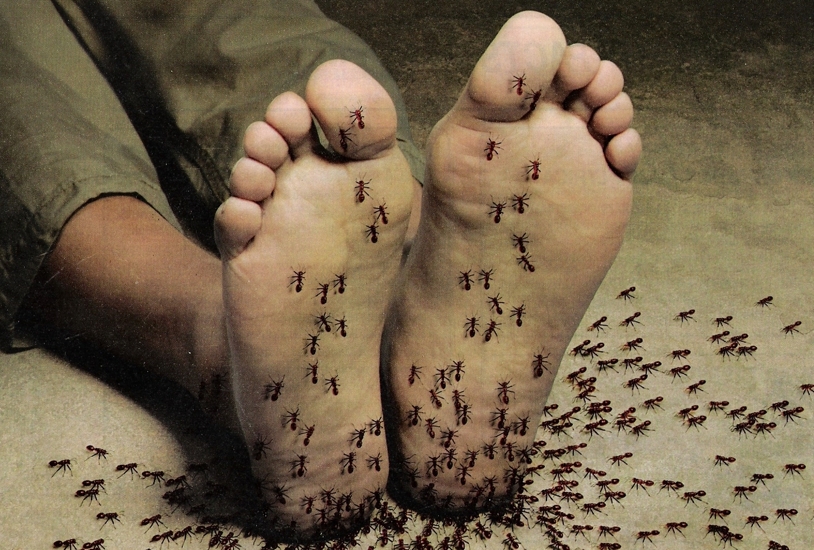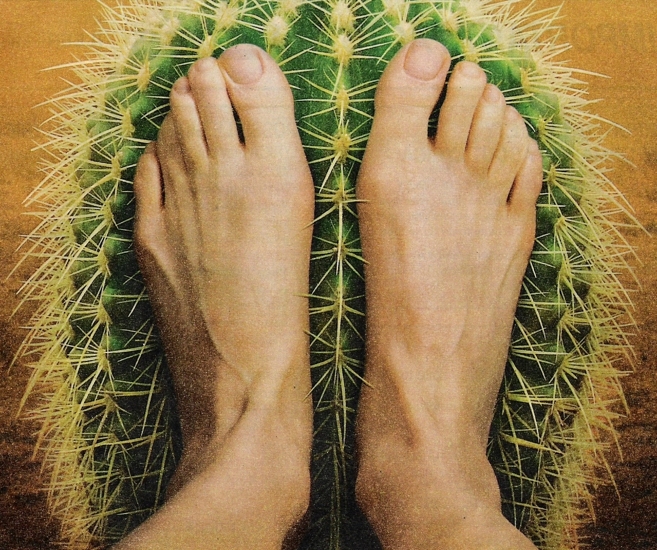
I was a Sugar Guinea Pig ---
an Inadvertent Medical Experiment
(lessons for other sugar-lovers)


|
I was a Sugar Guinea Pig ---
|

|
(2008 Jan blog post)
! Note !
Some web links may be added for further information
and some text may be added or changed to clarify
some points --- if/when I re-visit this page.
|
INTRODUCTION : If you (or a relative or friend) have two or more of the following symptoms, you should read this page.
A case study in unhealthiness : Around the years 2000-2005, I inadvertently made a sugar guinea pig out of myself and turned myself into a medical experiment. Unknowingly, I was headed onto a path to exploring, first-hand, various symptoms of "pre-diabetes" --- like the symptoms above. For most of my years, from college onward (about 1960-2005, about 45 years), I ate, pretty much without restraint, unhealthy amounts of sugar(s) --- in things like syrupy pies, sugary sweet rolls, sugary donuts, multiple servings of ice cream at a time, etc. But in the years 2000-2005, my consumption of sugar really got out of hand. I was imbibing such things as
In addition to these sugary 'foods', I was also eating lots of manufactured-food products that consisted mainly of refined-flour. Examples: too many donuts and too much pizza, at a sitting. Refined flour is almost pure starch --- and starches are long chains of sugar molecules that your body breaks down into sugar molecules, within a few hours, and eventually into glucose and triglycerides. Glucose and triglycerides are measured in typical blood tests. More on triglycerides below. (By the way, triglycerides are the chief chemical making up your fat cells.) My increase in sugar consumption via junk food eating was mainly due to stress-induced poor eating habits --- as I was feeling a lot of stress in my job. Also, I did not avail myself of the many health and diet books available --- as many such books became available in my 40's and 50's (1980's and 1990's). Unfortunately, it took some medical 'boots to the head' to get me to pay attention. When I was growing up, in the 1940's and 1950's, there was not nearly as much dialog about weight, diet, and health. I found out, through literally-painful personal experience, that the human body is amazingly hardy --- and amazingly resilient --- for about 50 years. You may be able to endure 20 or 30 years of 'medium-bad' eating habits with no apparent adverse effects, BUT when you get in your 50's, you will probably start reaping the consequences --- especially if you pick up the pace of the sugar consumption to a ridiculous level. Anyway, I found out that, like Gloria Swanson (a famous actress in the early 1900's) said, sugar IS poison. See the book 'Sugar Blues', by William Dufty, page 12. For those of you who never will get around to seeing the book, here are some quotes from her.
She later testified before Congress on the subject, as mentioned in the Dufty book. Unfortunately, food and drug companies have much more economic clout with Congress and the Chief Executive --- and, besides, as she said, people have to learn the hard way. That's the way I had to learn, as documented below. Added SugarS : 'Added', 'refined' sugar(s) definitely interferes with any chance of achieving "optimum health" --- and it/they can cause a variety of very nasty effects (neuropathy, exhibited by itchy-biting feeling in feet ; also cracked heels and disintegration of cartilage in knees). Sugar consumption beyond what your body needs (and resultant high triglycerides) seem to create these nasty effects by virtue of shutting down capillary blood flow. If I had died while I was experiencing the above symptoms and if a microscopic autopsy were performed, I could have served as proof of this. I do NOT volunteer to re-create the symptoms and serve as proof. But researchers could probably prove this by doing autopsies on low-sugar-eaters versus high-sugar-eaters. Unfortunately, since a drug is not involved, it is unlikely that anyone will fund a study like this. Considering the amount of money the federal government wastes, funding a study like this would be a bargain --- and far from a waste, if it led to permanent medical education --- of doctors, nurses, dieticians, and nutritionists as well as the general population. Besides adverse effects on capillary blood flow, there are cataracts. An eye problem : I was saved by getting a bad cataract before I had a nasty cardiovascular event --- and before experiencing even more damage to my legs. Around the year 2003, I began experiencing some very annoying vision problems --- especially double vision --- which I eventually found out was due to a problem with my right eye, not my left. But I could not determine the cause of that double vision. In addition, I had annoying floaters (far more than I had ever had in my youth), including a floater in my right eye that persistently stayed in the center of my vision, making reading books and street signs more and more difficult as months passed by. I went to opthalmologists and after visits to several, found that I had a cataract that was "beginning" in my right eye. The opthalmologists could not tell me much about my floaters, except to say to ignore them. The one in my right eye would not be ignored. It wasn't clear, at that time, whether the forming cataract was related to the double vision. In seeking answers to these vision problems and in seeking information on causes and cures (if any) for cataracts, I started doing web searches that eventually spanned many months. Triglyceride levels in your blood tests : In my web searches, I found that recent research, circa 2001, indicated that high triglyceride levels in the blood are a cause of cataracts. Almost every ophthalmology clinic with a web site, and a web page that discusses cataracts, now mentions high triglycerides as one of several possible causes of cataracts. This association between high-triglycerides and a medical condition that I was experiencing was a revelation to me that then led to my becoming aware of triglyceride levels in my annual blood tests. A triglycerides level of over 150 mg/deciliter is considered high. Mine were around 250 in the years 2000-2004. And my levels went over 350 mg/deciliter by the end of that time period. And these were 'fasting' triglyceride levels. I hate to think of what my triglyceride and blood-sugar (glucose) levels were in the hours after several large 'cokes' at a fast food place. Change in diet : To reduce triglyceride levels, the typical suggestion (in medical books and from doctors) is to reduce sugars and starches in one's diet. Starches are long-chains of sugar molecules. High starch foods include potatoes, rice, and bread --- and other flour products besides bread. Examples: Twinkies, Ho-hos, Moon pies, donuts, cakes. Note that high-sugarS and high-starch foods are about 90% of the "foods" in "convenience stores" such as Seven-Elevens, gas stations, and, ironically, drug stores --- the sellers of insulin and weight-loss products. These revelations led me to drastic changes in my diet --- no more cokes, no sugar candies, no sugary pastries, no pie or cake, and reduced amounts of potatoes, pizza, and other starch-heavy products. If I were a professional bicycle racer like Lance Armstrong or a runner like Dean Karnazes (who ran 50 marathons in 50 states in a short time span), I would not have to be so concerned about starches. I would 'burn' starches off as fast as I could eat them. But I, like most Americans, fall into the class of sedentary, non-extreme-athlete people. Unfortunately, I cannot resist multiple bread sticks in restaurants --- and the occasional dark chocolate binge.
Note: This is an even higher concentration of sugar by weight than cokes --- each of which contain many teaspoons of sugar, like high fructose corn syrup (HFCS). Milk chocolate is over 50% added-refined-sugar. An advantage of sugar-added chocolates over sugar-intense cokes is that the sugar mixed into chocolate is absorbed by the body a little more slowly than the sugar in (liquid) coke --- so the spike of refined-sugar (and then glucose) may be a little lower with chocolate. But the higher sugar concentration of dark and milk chocolates may actually mean the sugar spike is just about as high with a chocolate bar as with a can of coke --- even if the chocolate is dark chocolate. In spite of 'falling off the wagon' occasionally, with bread (starches) and chocolate ... and ice cream, my diet-change actions led to improvements in my painful knees, itchy feet, and cracked heels --- although I could not find a way to reverse the bad cataract in my right eye. I eventually, in fall 2005, had cataract surgery to replace the lens in my right eye with an artificial lens, while having a vitrectomy on that eye at the same time --- a combined operation for cataract and floaters, sometimes called a 'floaterectomy'. Time Frames : About 1 year after changing my diet drastically, I found (in 2006) that the deep cracks in my heels and the scaly skin on my arms were essentially all gone. Also I got my triglycerides down to about 45mg/dL in early 2006. But a blood test in fall of 2007 showed my triglycerides were back up to 145 mg/dL --- just below the recommended max of 150. In my web searches, I found a doctor's research paper that recommended keeping triglycerides below 100 mg/dL, rather than 150. In fact, that paper pointed out that there was a higher correlation between high-triglycerides and cardiovascular problems than between high-cholesterol and cardio problems. So I need to get back to the stricter diet I had been following. Healthy sugar sources --- and veggies : To satisfy my craving for sweets, I have allowed a lot of fruit in my diet --- especially, frozen blueberries, thawed --- and eaten with various items like milk, sliced bananas, and/or nuts. I have also indulged occasionally in (dark) chocolates that my wife brings home. I think I need to increase my ratio of vegetables to fruits, in order to get my triglycerides back down below 100 mg/dL. And I need to cut back on the chocolate and ice cream binges.
Some beneficial results --- About 2.5 years after changing my diet drastically, I found that the pains in my knees --- pains that were quite uncomfortable, and at times quite piercing, when I was simply sitting --- had almost completely disappeared. The pains might have disappeared sooner, but ... Earlier in the same year that I had the cataract surgery (2005), I had arthroscopic surgery on my right knee. My right knee was paining me more than my left knee. An orthopedist found, via an MRI, that I had a slight tear in the meniscus (cartilage) in the right knee, and (what was supposed to be) a minor operation was performed to 'shave' the torn meniscus. I was in extreme pain after the morphine used in the operation wore off (more on that in a separate 'medical errors' post), about 24 hours after the operation. I found it impossible to walk up and down stairs without using a 'peg-leg' technique and using hand rails for support. The pain in walking up and down stairs lasted from June 2005 to mid 2007 (about 2 years), until the pain finally subsided to the point that I no longer needed to support myself on handrails to walk up and down stairs. Word to those planning to have knee surgery: It is more painful to walk DOWN stairs than UP after such surgery. Ask someone who has had the surgery and been through recovery to explain the peg-leg technique of going up and down stairs. Doctors and nurses generally don't tell you about that technique. Knee surgery patients seem to have to pick up the technique on their own. Finally, after about 2.5 years, BOTH knees that were experiencing piercing pains, even when simply sitting, are almost pain free. I still got an occasional piercing pain in my right knee --- the surgery knee. But episodes were now several days apart most of the time. And I expected them to get less frequent.
UPDATE: (The knee fragments were probably eventually ground up and assimilated.) After about 2 years of a better diet, I found that I was able to avoid surgery on the left knee and I was able to return to running. I was running about 2 miles several times a week, and planning to do a 5K (3.1 mile) community run every couple of months. I had to give up tennis for about 2.5 years --- because of the right-knee surgery and the pains in both knees. I hoped to start playing tennis at least once a week, again, in 2008 --- 3 years after the right-knee surgery.
UPDATE: Recovery time after knee surgery : I suspect it took such a long time for Mother Nature to do her magic and heal my knees (even my left knee, that did not have to recover from surgery) because cartilage is poorly perfused with blood. There was the complicating factor that the knee surgeon had removed some knee cartilage from the right knee cap ( 'debridement') when he was (I thought we agreed) only going to trim some meniscus. It was probably the case that it took quite a while for capillaries to return to better health, and then to nurture the cartilage back to health (even though I had much healthier blood) --- because there is very little blood flow to cartilage, hour to hour and day to day.
One more comment on knee-pain, About 9 months after having the knee surgery, I got a part-time job at Busch Gardens amusement park (to try to augment retirement income). (My retirement started 01 Jan 2005 --- just 6 months before my knee surgery and 9 months before my cataract surgery. That's a heck of a way to start retirement!) I worked at the main gate of Busch Gardens for a few days a week, for a couple of months (until I found my right-knee was not healed enough from the knee surgery to take being on my feet for 8 hours). In that time, I saw thousands of people come through the main gate each work day. It was disheartening to see the large percentage of people who were over-weight and obese. After my sugar experiences, medical effects (knees, eyes, heels, etc.), and diet experiences, I knew what many of these people were going to go through in the future --- and how that could be avoided. There were some who were probably already going through problems similar to those I had experienced --- and they were worse off.
Case in point : Almost 100% of the times that I saw these people, they had a basket on the front of the electric cart and in the basket was a liter of 'Coke' or 'Mountain Dew' or the like. I felt a great urge to warn these people that there was a very high likelihood that the reason they could no longer walk was that they were consuming too much refined sugar --- in cokes and, probably, in the 'foods' that they typically ate. But it was not appropriate for me to do that as a 'greeter' at the gate. These blog pages, and this one in particular, are an attempt to give warning and help to others who may experience the symptoms of 'sugar poisoning' that I experienced when I inadvertently turned myself into a medical experiment and made like a guinea pig consuming very-unhealthy amounts of refined sugar --- augmented by unhealthy amounts of starchy foods that added to my refined-sugar-problems. IN SUMMARY If you (or a relative or friend) have two or more of the following symptoms,
then you (or they) should have their triglyceride levels checked and, if they are above 150 mg/dL, start on a low-sugar, low-starch diet --- like the 'No Sugar, No Flour' diet recommended by Peter H. Gott M.D. in his book 'No Flour, No Sugar Diet', 2006, a Warner Wellness book, from Hachette Book Group, NY, NY. For educational and important quotes from this book and many other books on food and health, see this health-and-food books (quotes) page. MORE INFO I have some other blog pages related to sugar, triglycerides, and health. Return to my main blog page to see those blog pages in my menu of my blog pages. Many links to informative diet sites --- in particular, low-carb (i.e. low sugar) diet sites --- are on this web site, on the Diet Links page. The Diet-Links page includes sites with before-and-after photos of previously-obese "diet-changers". These "diet-changers" don't consider themselves "dieters". They have changed their diet --- for the rest of their lives --- a "lifestyle change" --- for the purpose of extending their lives --- and for the purpose of improving the quality of those lives. To get some more info on this subject of sugarS and starches and triglycerides and knees and eyes and health, you can try WEB SEARCHES on keywords such as: |

|
Bottom of this page on blog topic
To return to a previously visited web page location, click on the
Back button of your web browser, a sufficient number of times.
OR, use the History-list option of your web browser.
< Go to Top of Page, above. >Or you can scroll up, to the top of this page. Page history:
Page was posted 2008 Jan 21.
|
